Get an overview of The Greenhouse Centre's recent publications, articles and released books.
The Osage, Automobility, and the Environment in Sundown (1934)
UiS post-doctoral researcher Daniel Bowman writes about John Joseph Mathews’s 1934-novel Sundown, and the use of automobiles as signifiers of national identity.
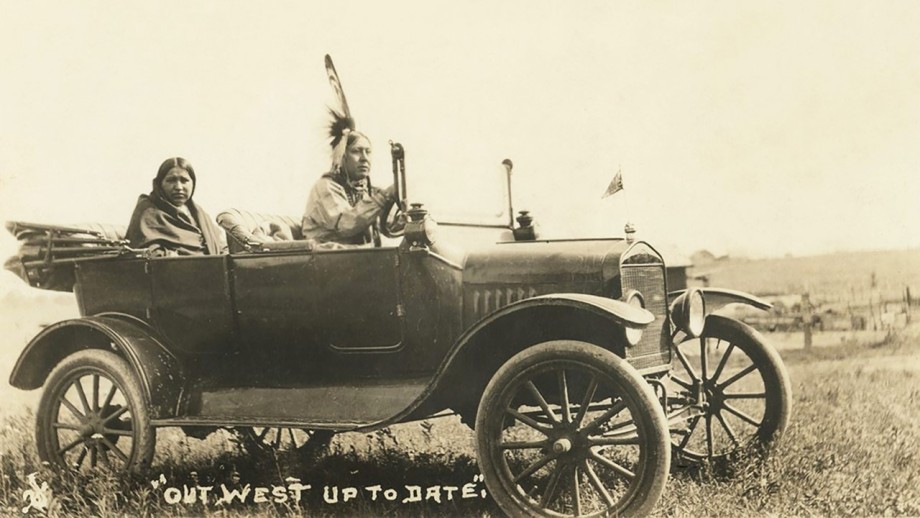
Daniel Bowman’s latest literary studies article was recently published in the European Journal of American Studies, as part of a Special Issue on Figurations of Interspecies Harmony in North American Literature and Culture, focusing on John Joseph Mathews’s 1934-novel Sundown, and drawing on Martin Scorsese’s 2023-film Killers of the Flower Moon.
A nation of horsemen to a nation of mechanics
In the early twentieth century, Bowman notes, American national identity became increasingly associated with automobility and the move from “a nation of horsemen to a nation of mechanics,” as automotive periodical Horseless Age described it. As well as advocating for the removal of horses from “civilized” society due to their anti-modern associations (a familiar colonialist solution), Horseless Age also encouraged nationalistic attachment to the automobile—the new hallmark of civilization.
Up to this point, the (colonial) history of the automobile in the United States had Indigenous Americans positioned not in the driving seat but in the background, as primitive people who made up part of the scenery. However, as Bowman’s latest study demonstrates, Osage writer John Joseph Mathews’s novel Sundown (1934) complicates this notion by presenting Indigenous ownership and operation of automobiles following the Osage Oil Boom.
Sundown follows the life of Osage American Challenge “Chal” Windzer, growing up in Osage County during the oil boom and struggling to balance his Indigenous roots with the desire to find routes into white settler culture. Drawing on a range of literary historical sources such as Horseless Age, Mathews’s ecological writing, and traditional stories of the Osage, Bowman’s reading of Sundown examines the inherent difficulties in separating the symbolism of the automobile from its material ecological consequences.
In much the same way that animal symbols are co-opted in automotive branding, Indigenous identities are exploited in car culture to conjure up a nostalgic past in which the ecological and colonial violence of American Modernity is conveniently forgotten. Bowman argues that Mathews’s Osage characters find themselves in a double-bind as they seek to refute stereotypes of technological primitivism whilst still maintaining and respecting Indigenous connections to the natural world.
Read the publication:
Bowman, Daniel, “Nation of Mechanics: Automobility, Animality, and Indigeneity in John Joseph Mathews’s Sundown (1934)”, European Journal of American Studies, 19.1 (2024)
The Mongoose on the Loose in Nineteenth-Century Jamaica
In a new article, Matthew Holmes examines how the invasive small Indian mongoose (Urva auropunctata) arrived in Jamaica and its ecological repercussions.
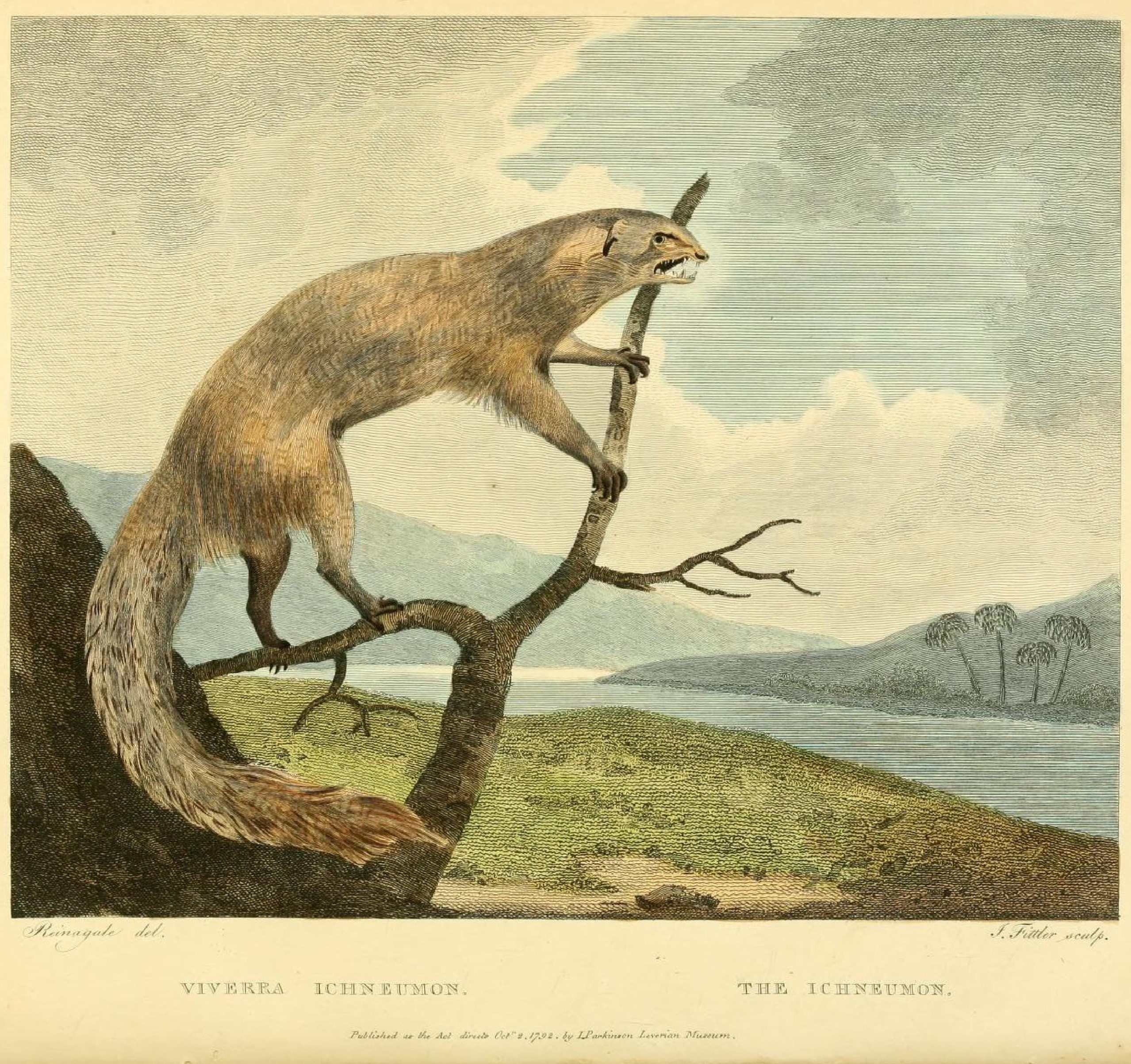
According to an estimate by the United Nations, invasive species cost the world over four hundred billion dollars a year and are a major factor in species extinction. In a new article, Matthew Holmes examines how the invasive small Indian mongoose (Urva auropunctata) arrived in Jamaica and its ecological repercussions.
In 1872, a British colonist introduced the mongoose to his sugar plantation, hoping that the carnivorous animal would control the rat population. The mongoose, however, spread across Jamaica and hunted indigenous and naturalized birds and reptiles to near extinction.
"Balance of nature"
British colonists complained that the loss of these insectivorous species to the mongoose was responsible for a subsequent outbreak of ticks in Jamaica. Yet in the closing years of the nineteenth century, British authorities claimed that these ticks attacked mongooses and greatly reduced their number: an example of the ‘balance of nature’ reasserting itself.
Holmes, however, questions this colonial narrative. He notes that an upsurge in the Jamaican tick population was probably due to the expansion of the colonial cattle industry, which carried and incubated the arachnids. The story that ticks had turned on the mongoose, Holmes argues, was a strategy adopted within the British Empire to retrospectively rationalize poor environmental decision making.
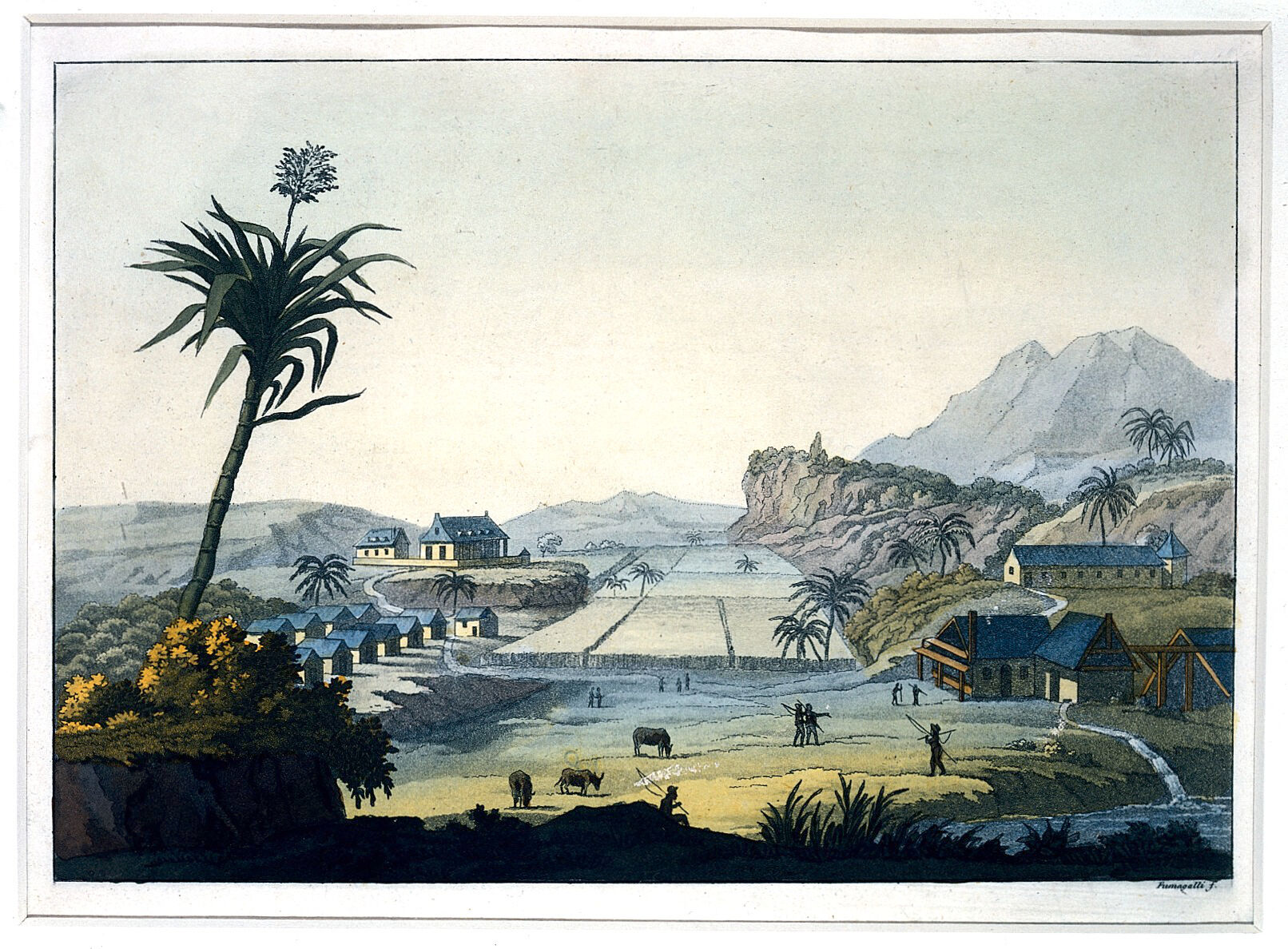
By claiming that the 'balance of nature' would reassert itself, supporters of the Jamaican plantation economy and animal introductions were able to gloss over their mistakes and claim that any negative impacts were short lived. This was not the case, and the mongoose remains one of the most damaging invasive species in the world today.
About Matthew Holmes
Matthew Holmes is a Postdoctoral Fellow in Environmental History at the University of Stavanger, where he examines the modern history of the house sparrow (Passer domesticus) in urban spaces. Matthew’s previous postdoc position at the University of Cambridge investigated science and agriculture in the British Empire. His forthcoming book with the University of Pittsburgh Press, The Graft Hybrid: Challenging Twentieth-Century Genetics, explores the creation of chimeral plants and animals. He also publishes on the history of biotechnology, morphology, and natural history.
Read the entire publication
Holmes M (2023). "A plague of weasels and ticks: animal introduction, ecological disaster, and the balance of nature in Jamaica, 1870–1900." The British Journal for the History of Science 56, 391–407. DOI: 10.1017/S0007087423000286
The impermanence of permafrost: learning how to be discontinuous
Charlotte Wrigley takes us on an exciting ride across Russia to understand permafrost as both a warning sign and a symbol of hope in her awarded book "Earth Ice Bone Blood".
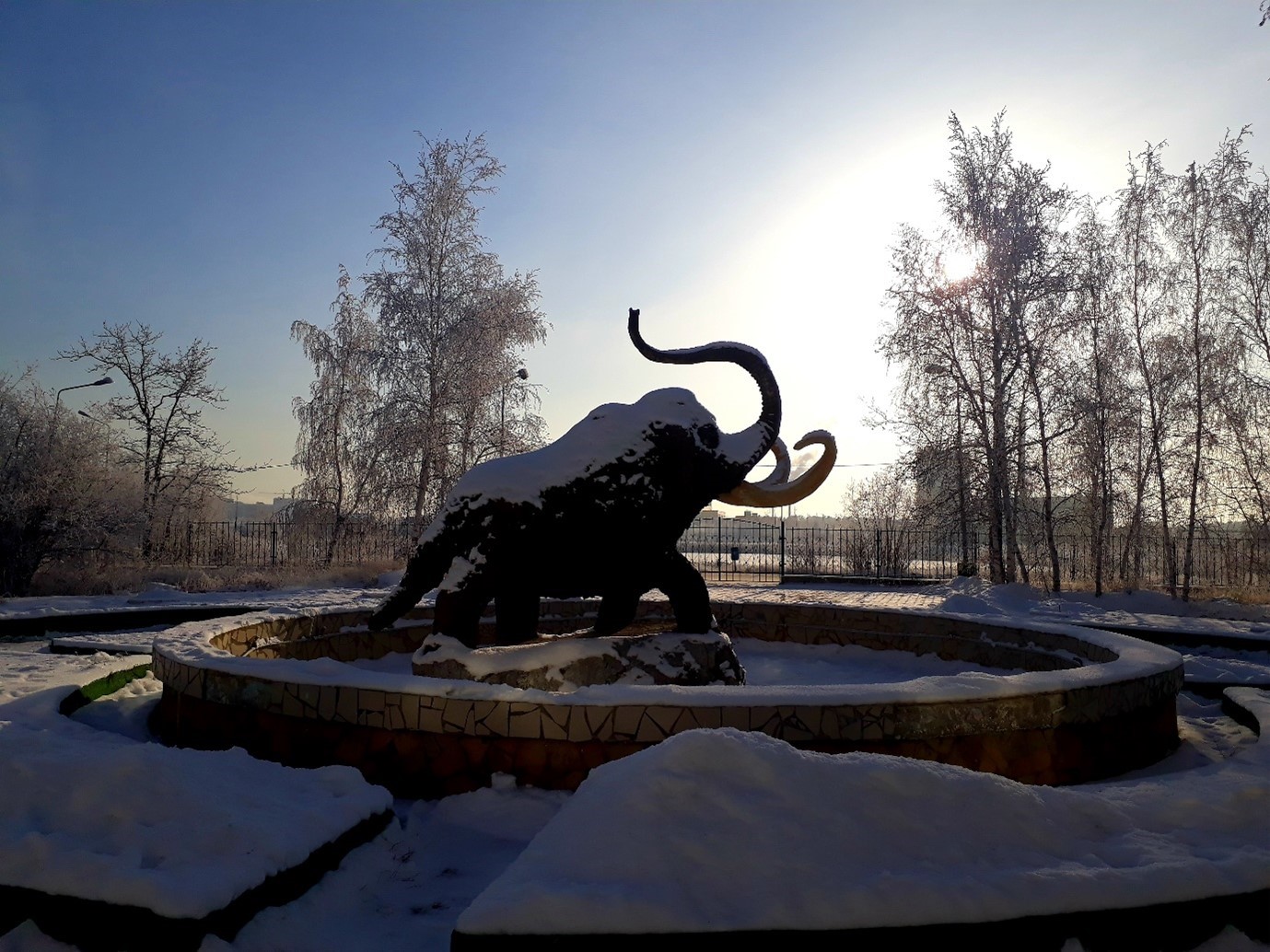
The Arctic is heating at up to three times the rate of the rest of the planet. But whilst the melting glacier and forlorn polar bear are well-known representatives of the climate crisis, much less attention has been given to a substance that makes up 25% of the northern terrestrial hemisphere: permafrost.
Understanding permafrost in the era of anthropogenic climate change
Permafrost is permanently frozen ground and sequesters huge amounts of carbon; if this ground thaws, this carbon is released as greenhouse gases. Knowing and understanding permafrost as a carbon sink is therefore crucial in this era of anthropogenic climate change. Permafrost, however, is much more than this. As a ubiquitous part of northern latitudes, permafrost is not only a scientific mode of enquiry, but a home for creatures from the microbe to the mammoth, a dynamic materiality of freeze and thaw, a host to gods and evil spirits, a freezer for milk and meat, and a geopolitical tool. That the name invokes a sense of permanence and eternity elides the reality that permafrost is often hard to pin down – and that climate-change-induced thaw is only making defining permafrost more difficult.
A discontinuous approach that has been awarded
Charlotte Wrigley’s first book – Earth Ice Bone Blood: Permafrost and Extinction in the Russian Arctic – argues that defining permafrost as a single thing will always be an impossibility. Instead of attempting to know permafrost in quantifiable ways, she argues we must take a “discontinuous approach” which recognises the dynamism, non-linearity, and surprise of this largely ignored substance. Taking the reader on an exciting ride across Russia – from the world’s coldest city to a Pleistocene rewilding project to a mammoth de-extinction laboratory – Charlotte’s book dismantles assumptions and norms around extinction and the climate crisis, and instead offers permafrost as both a warning sign and a symbol of hope.
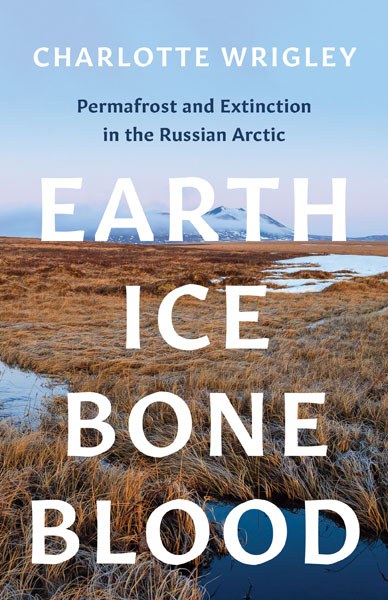
"Earth Ice Bone Blood" received the AAG Globe Book Award for Public Understanding of Geography in 2023.
Order the book:
Wrigley, Charlotte. 2023. Earth Ice Bone Blood: Permafrost and Extinction in the Russian Arctic. Minneapolis: University of Minnesota Press.